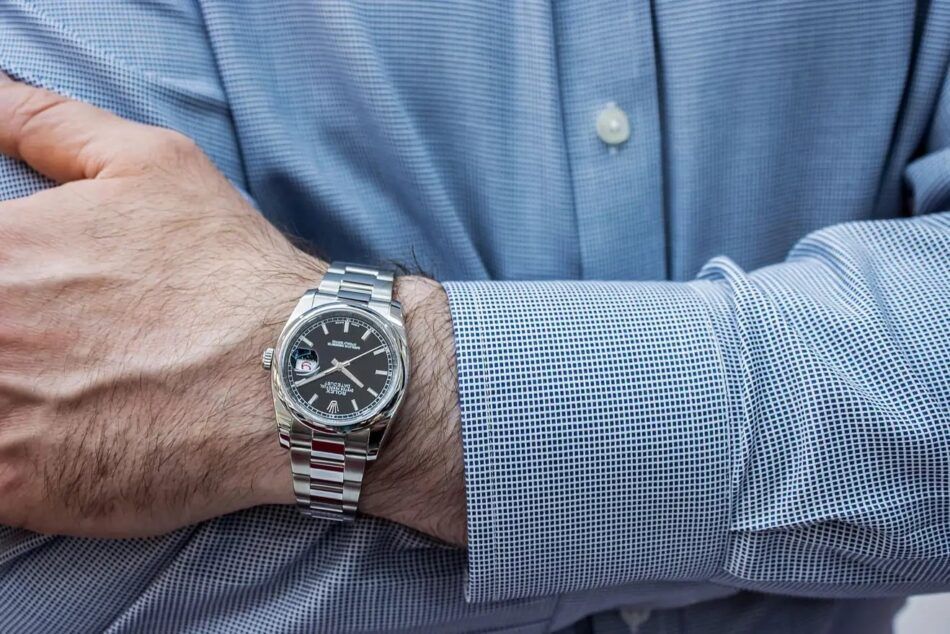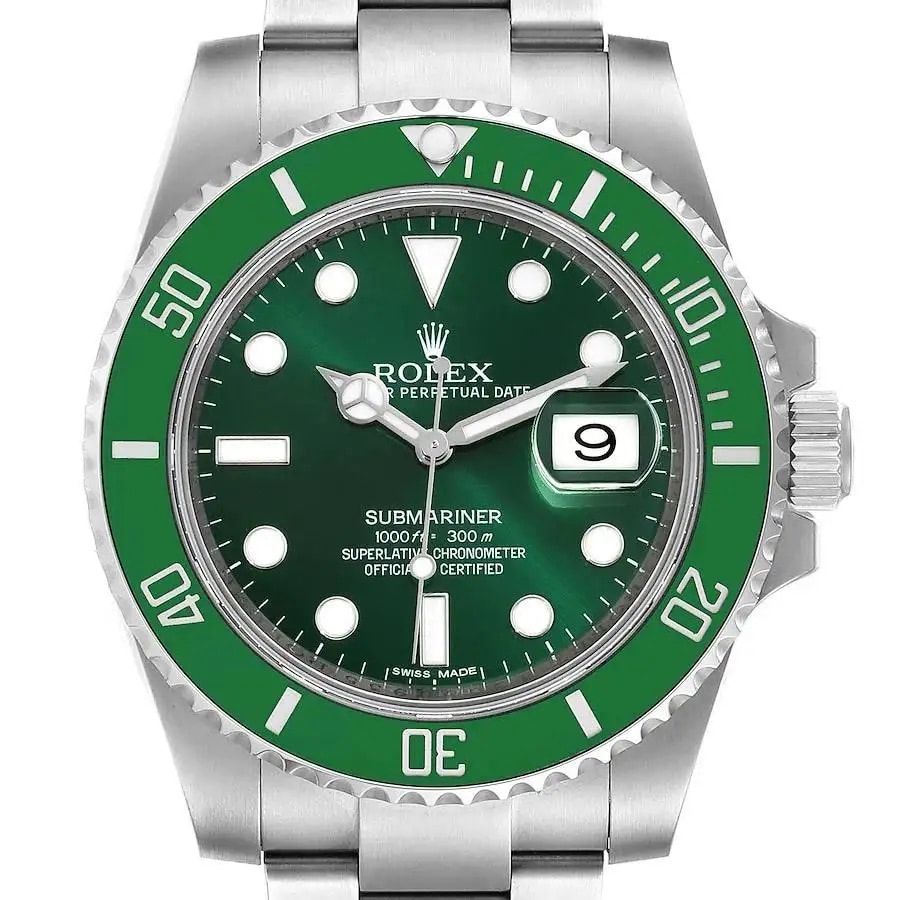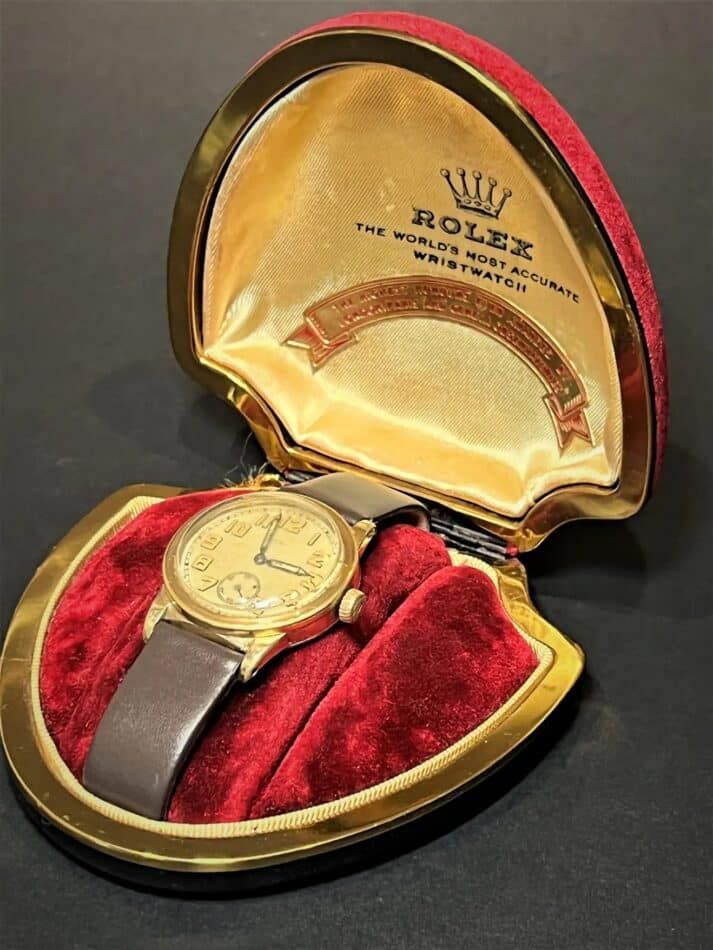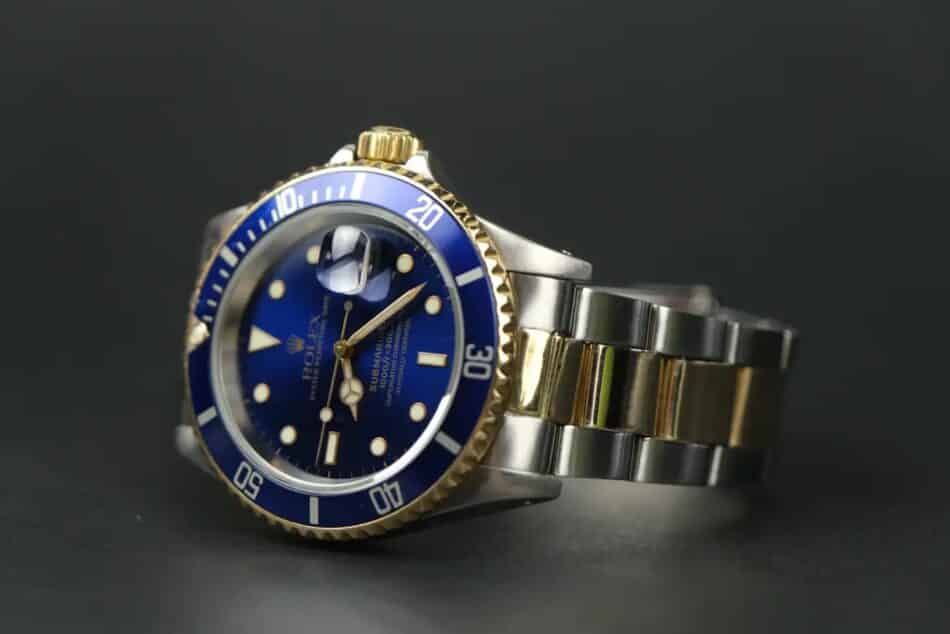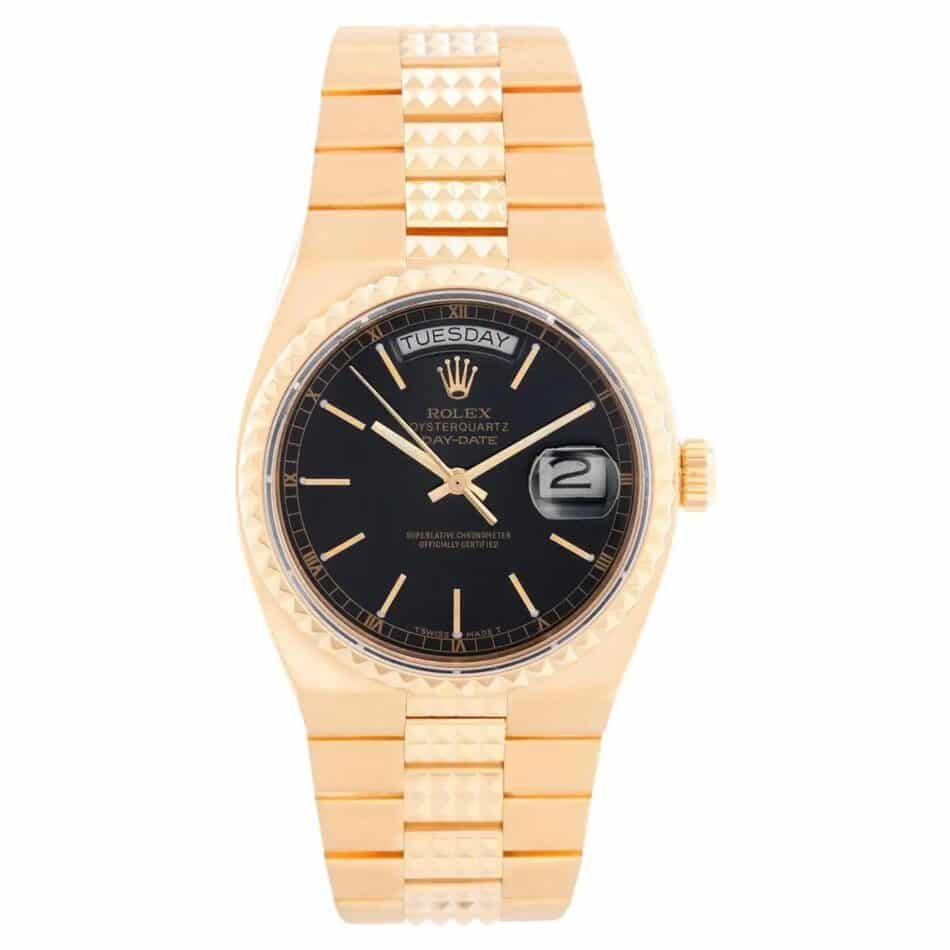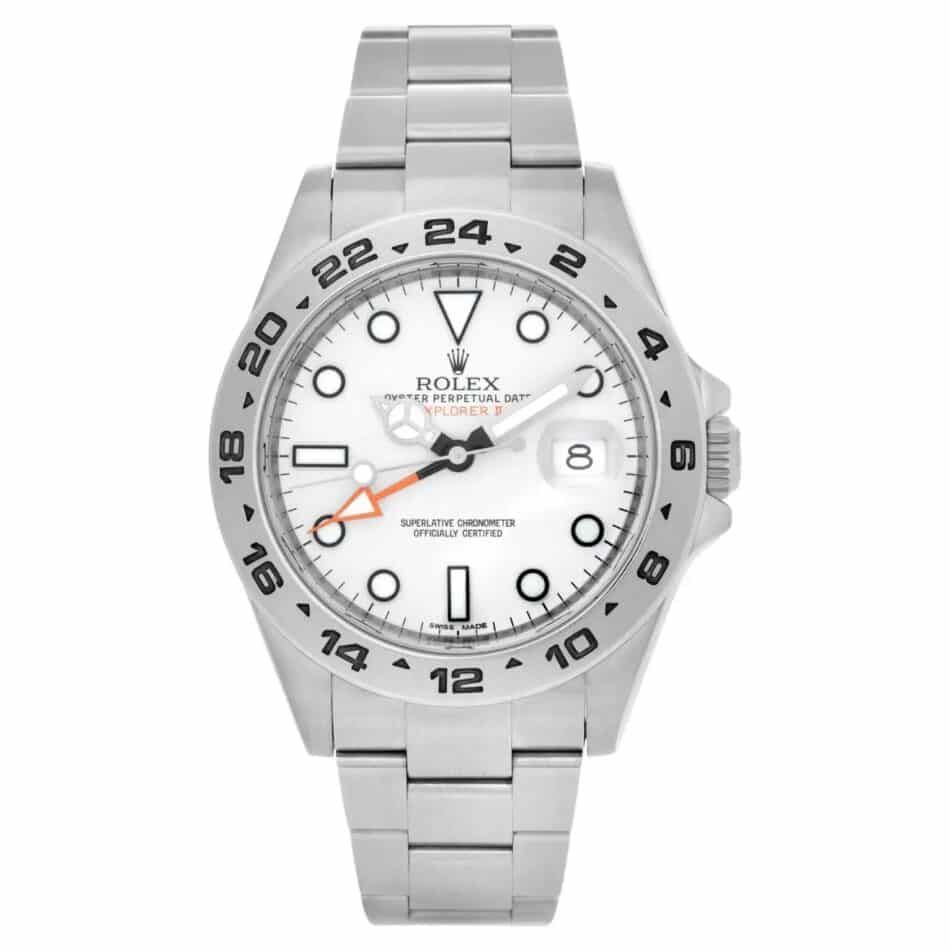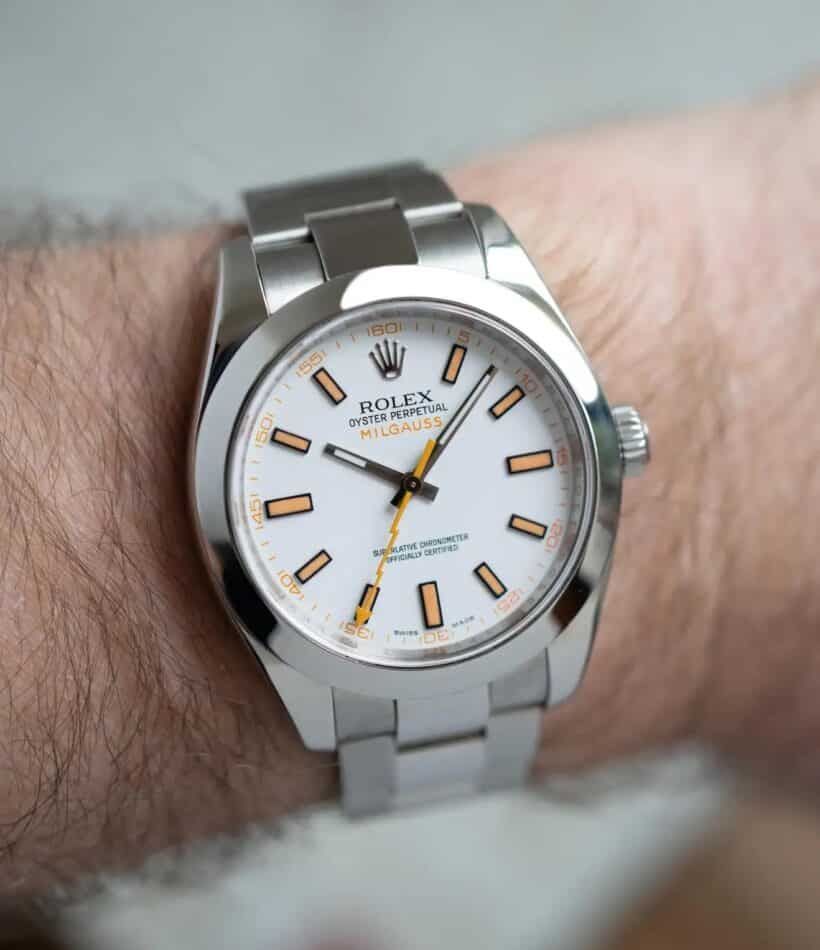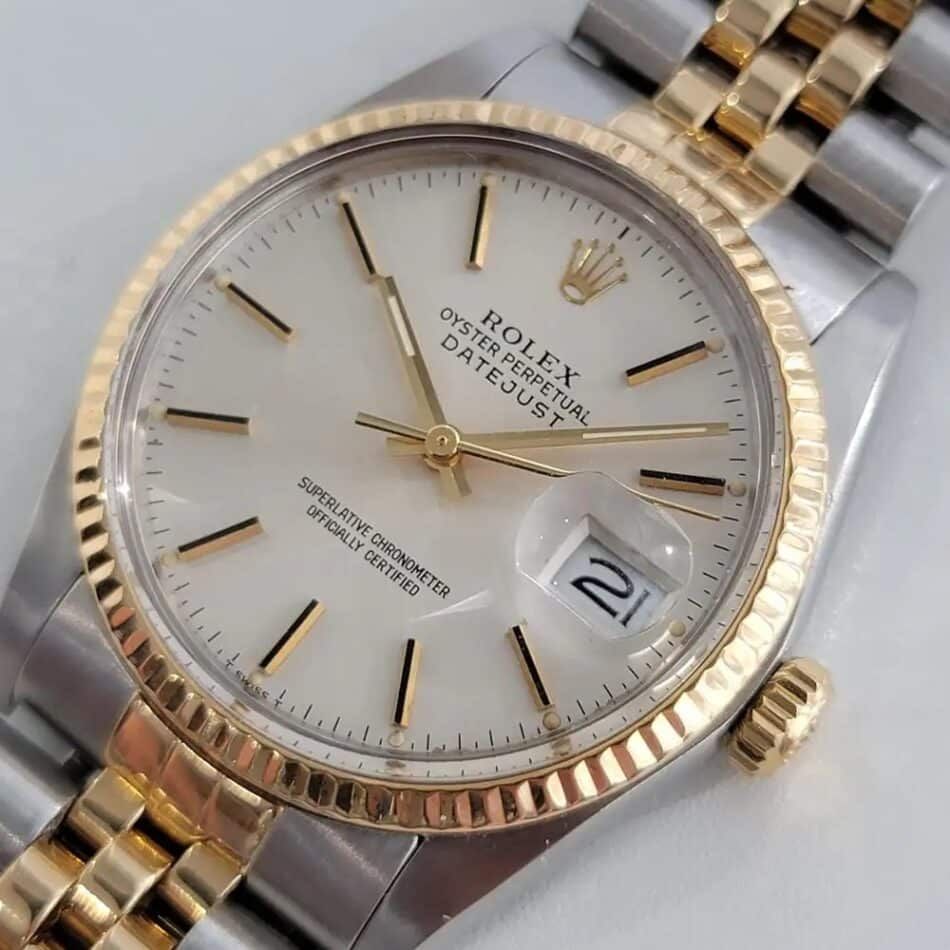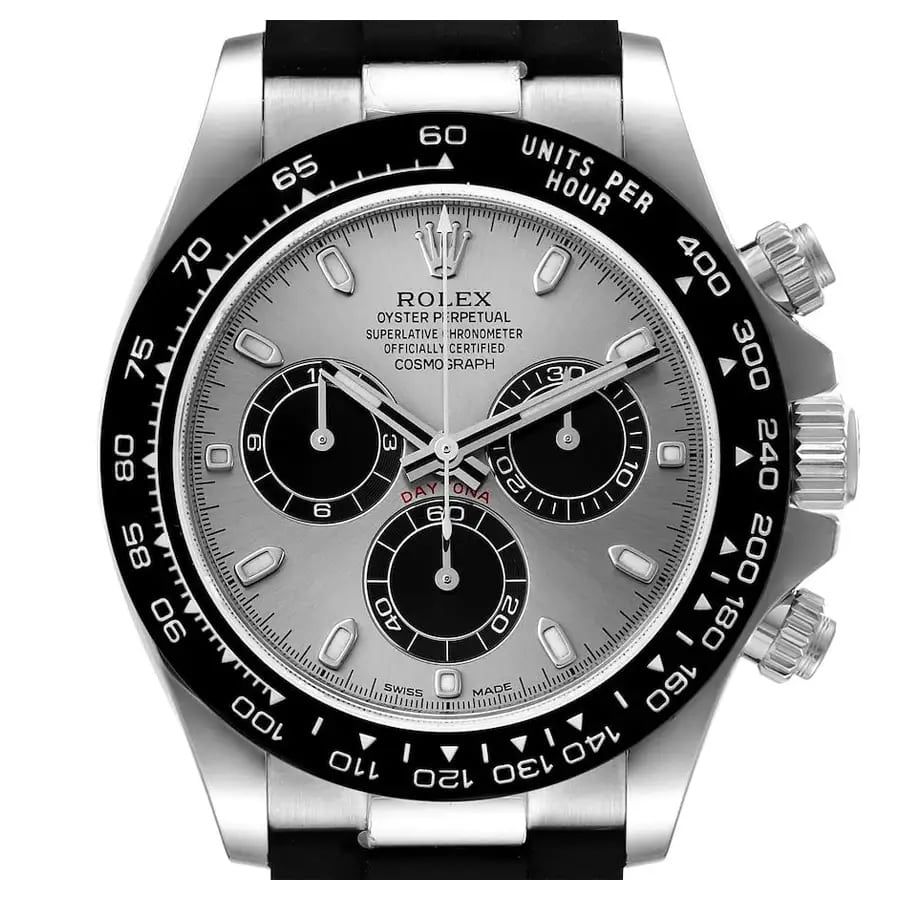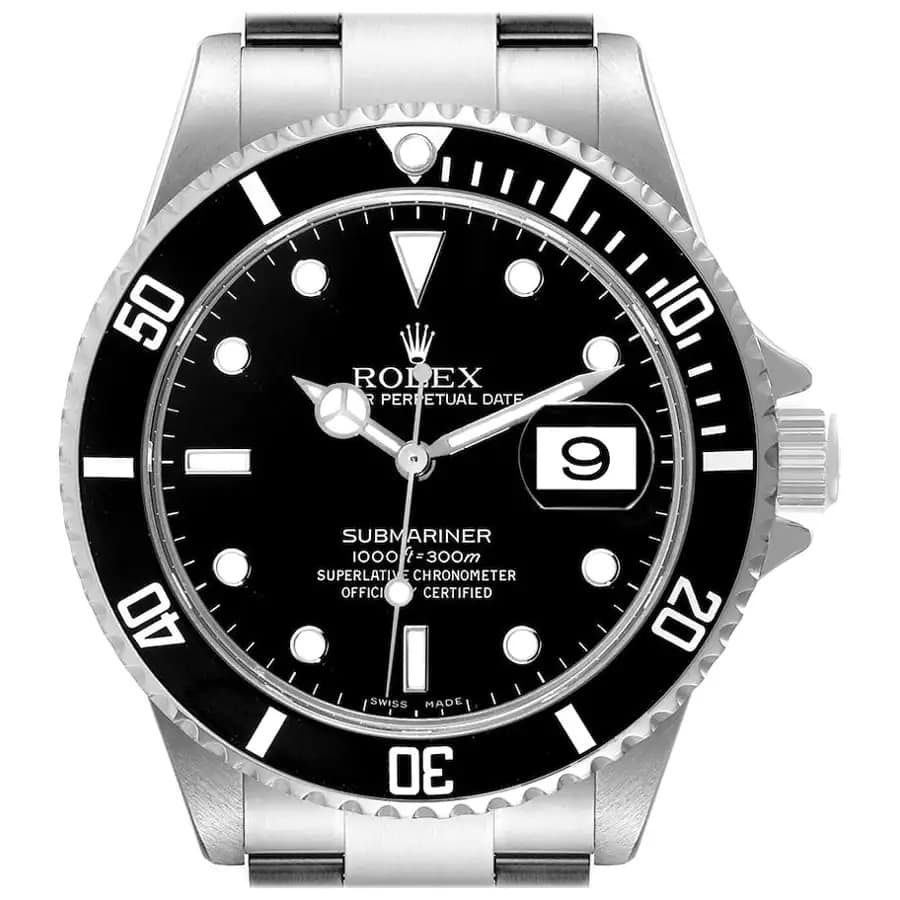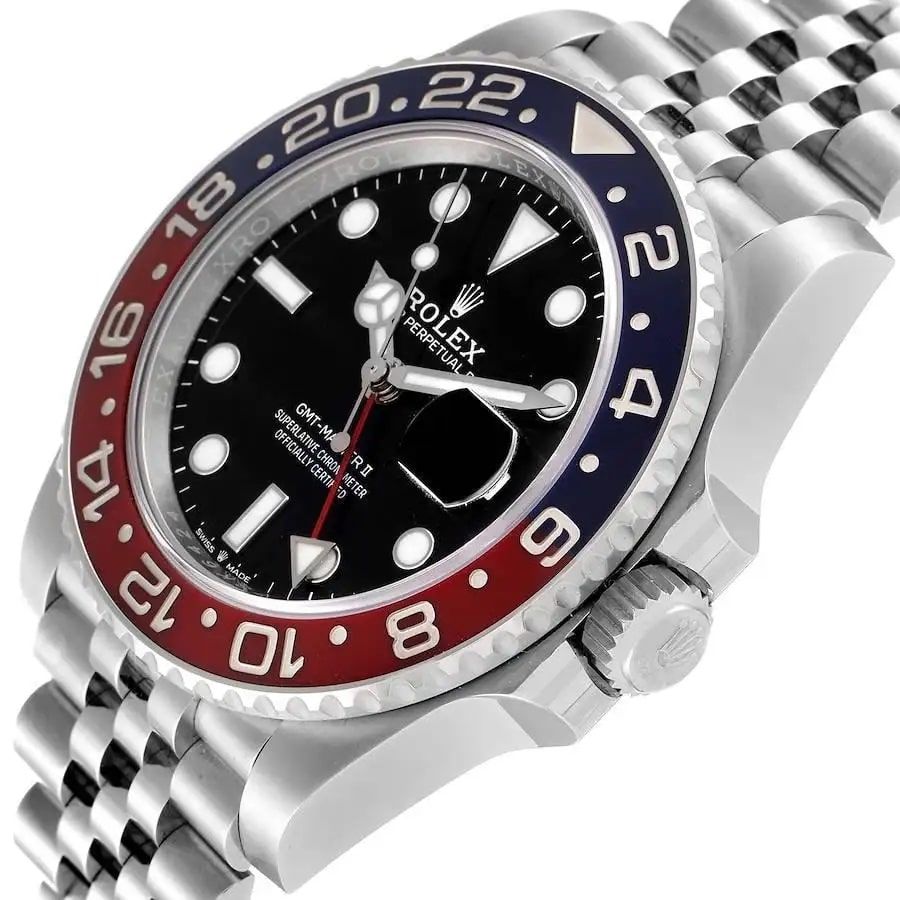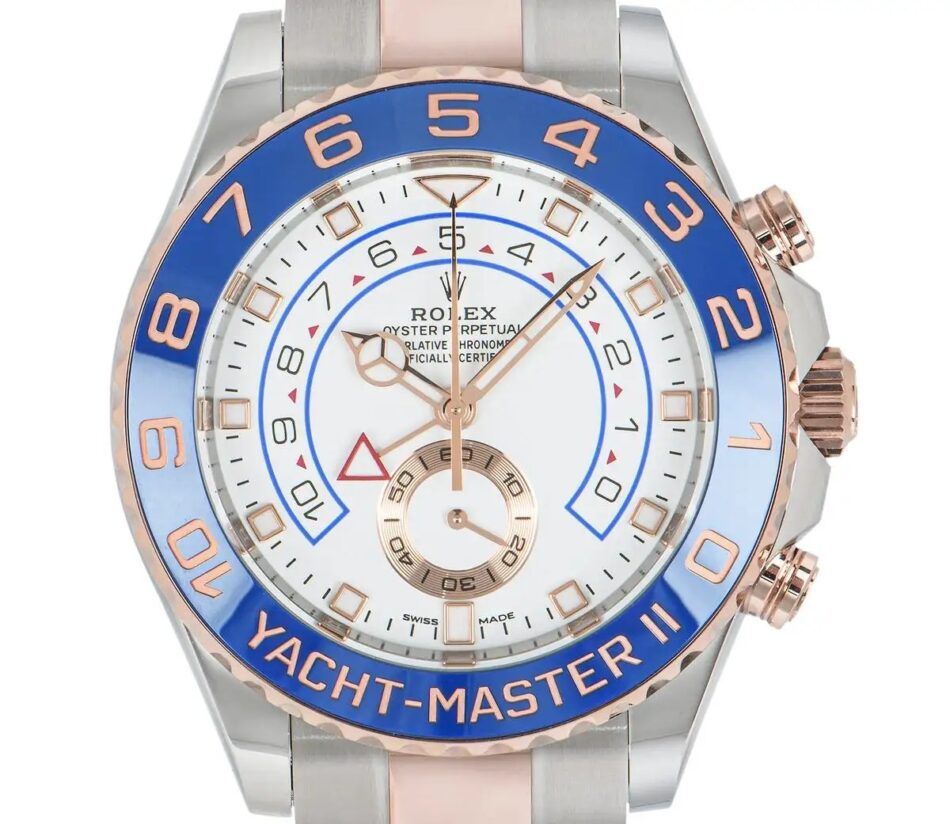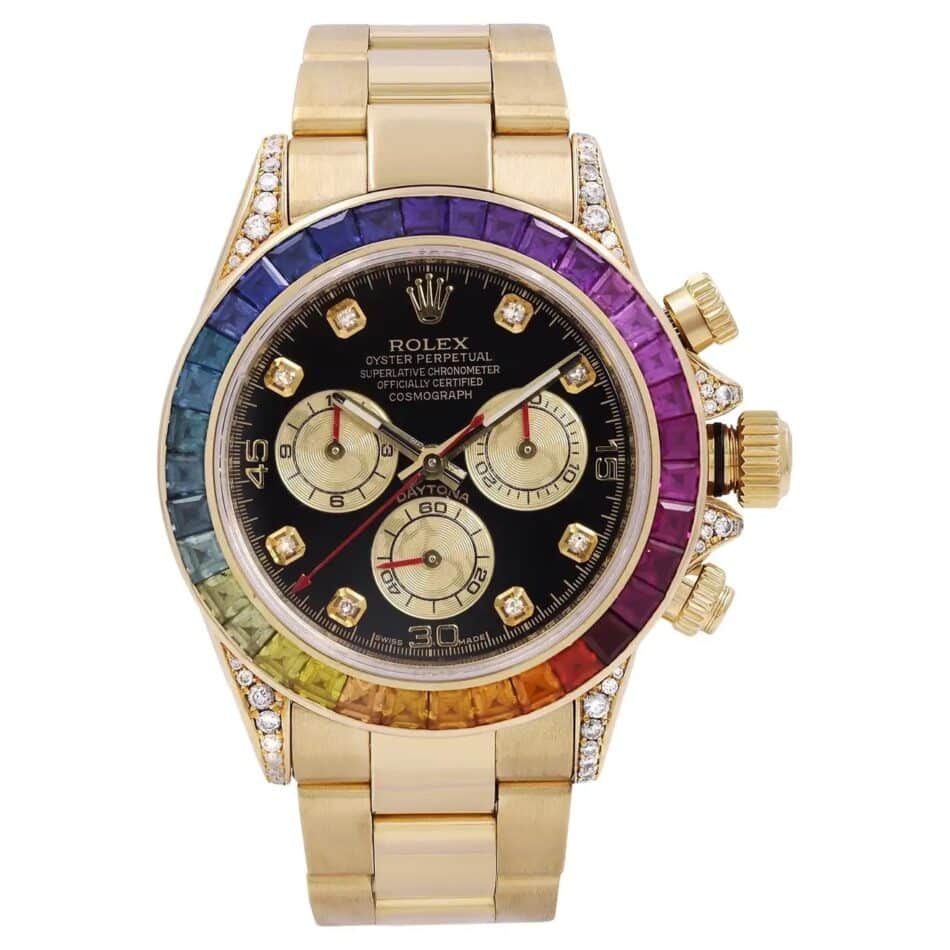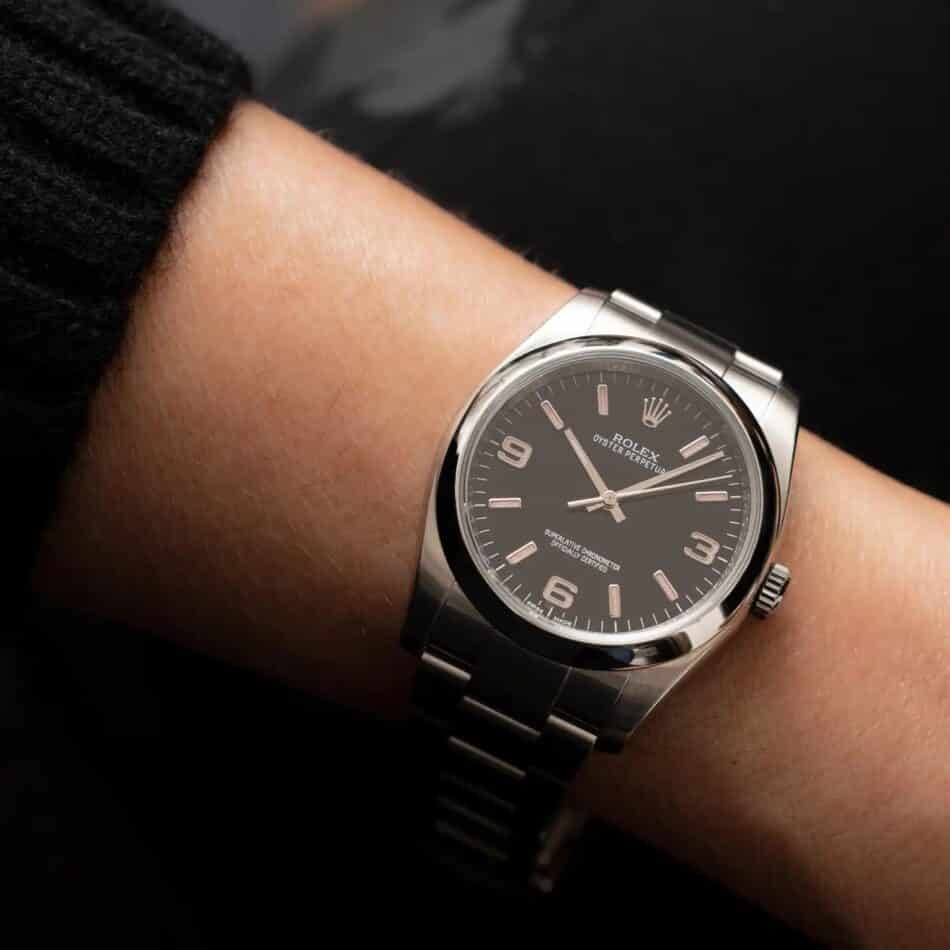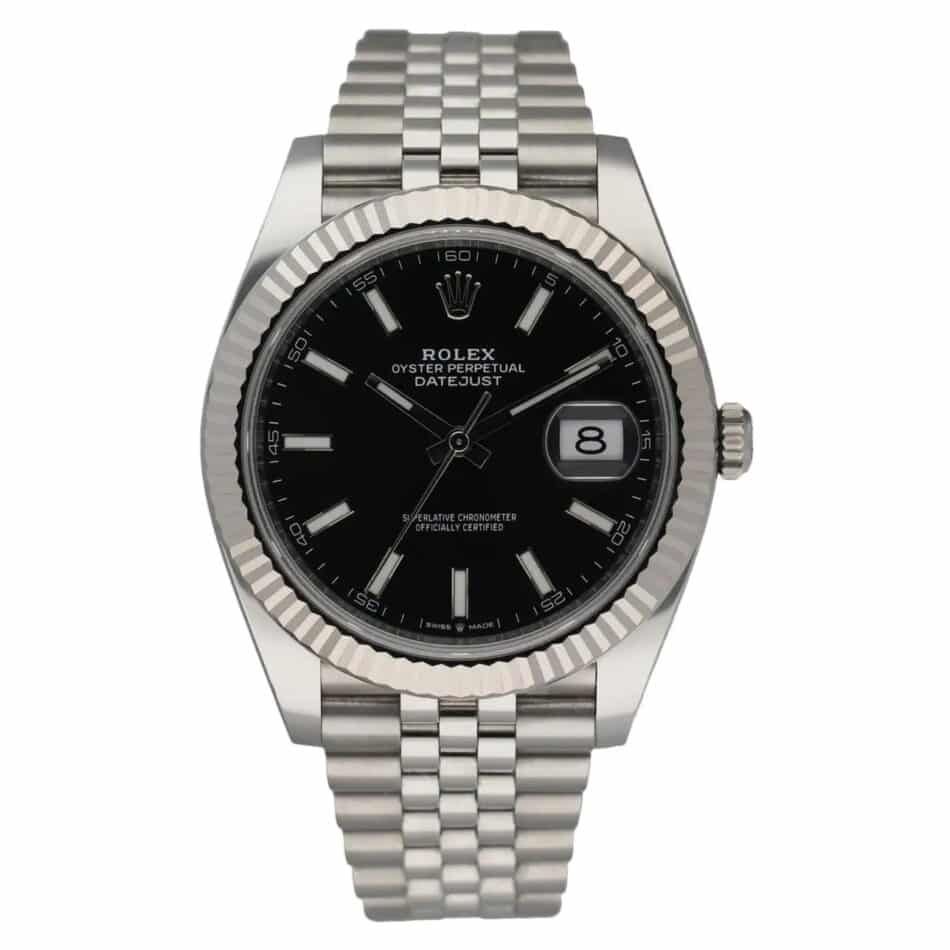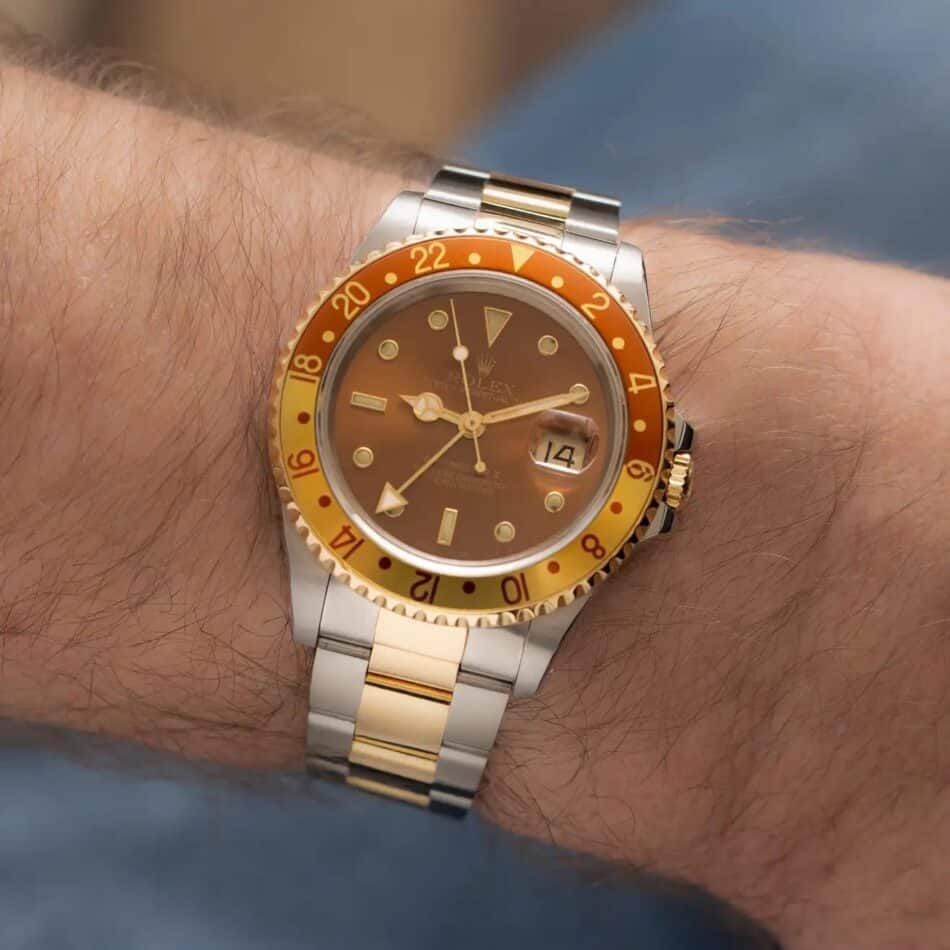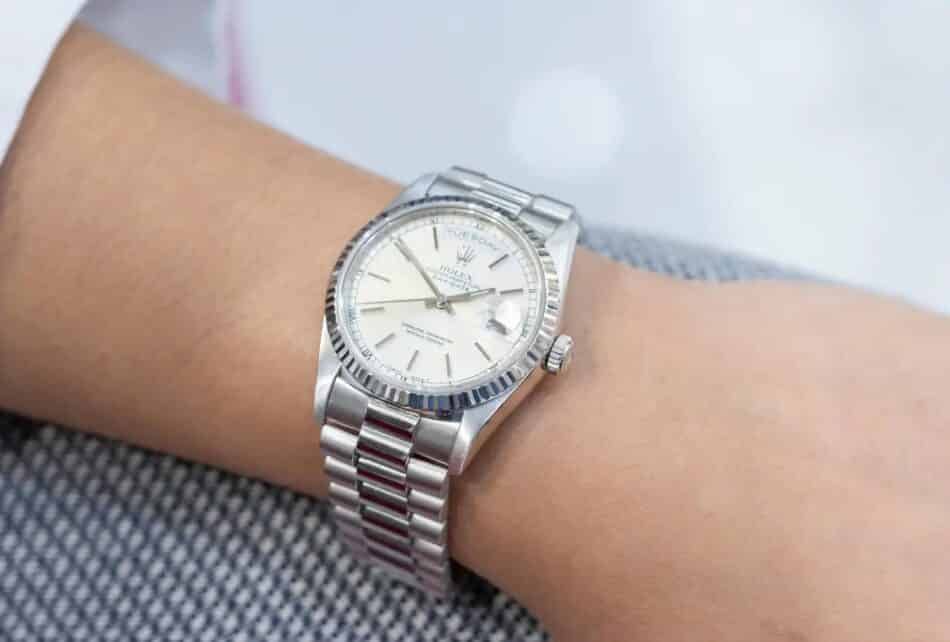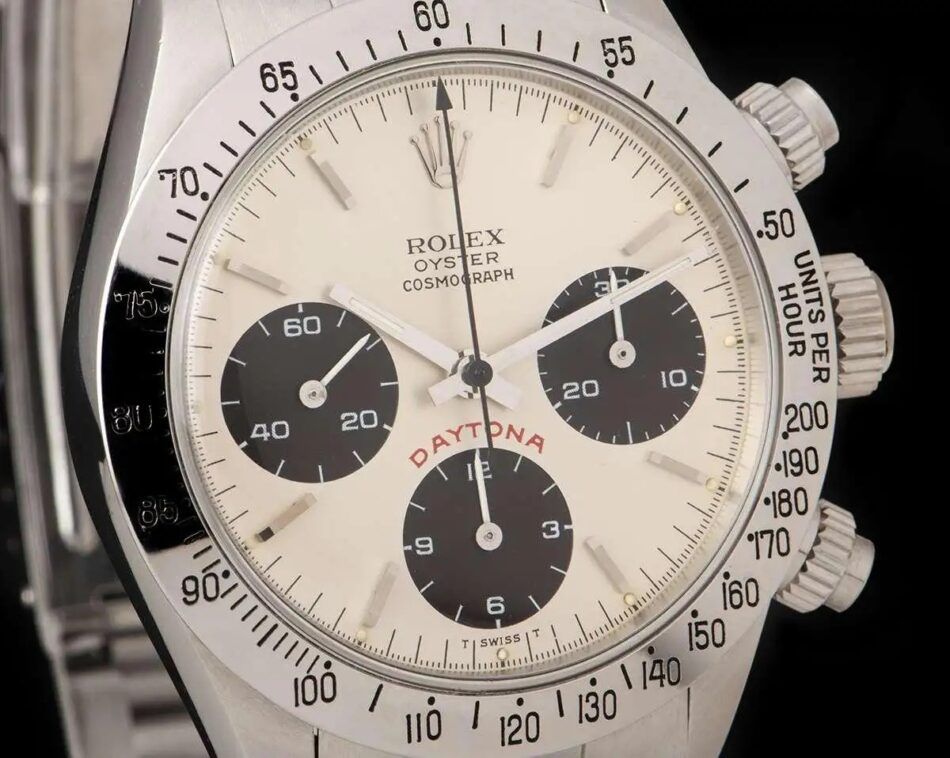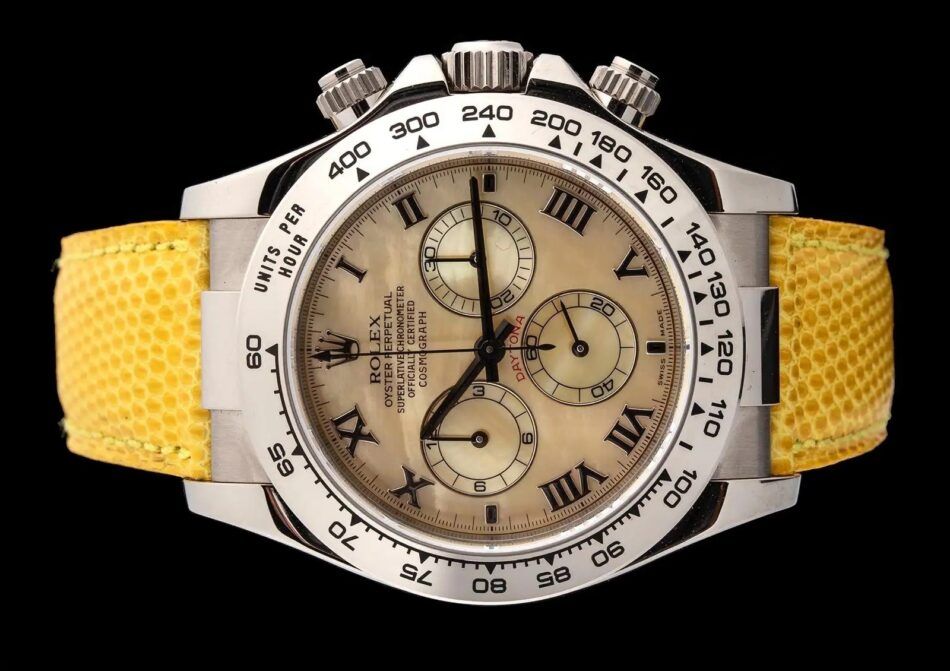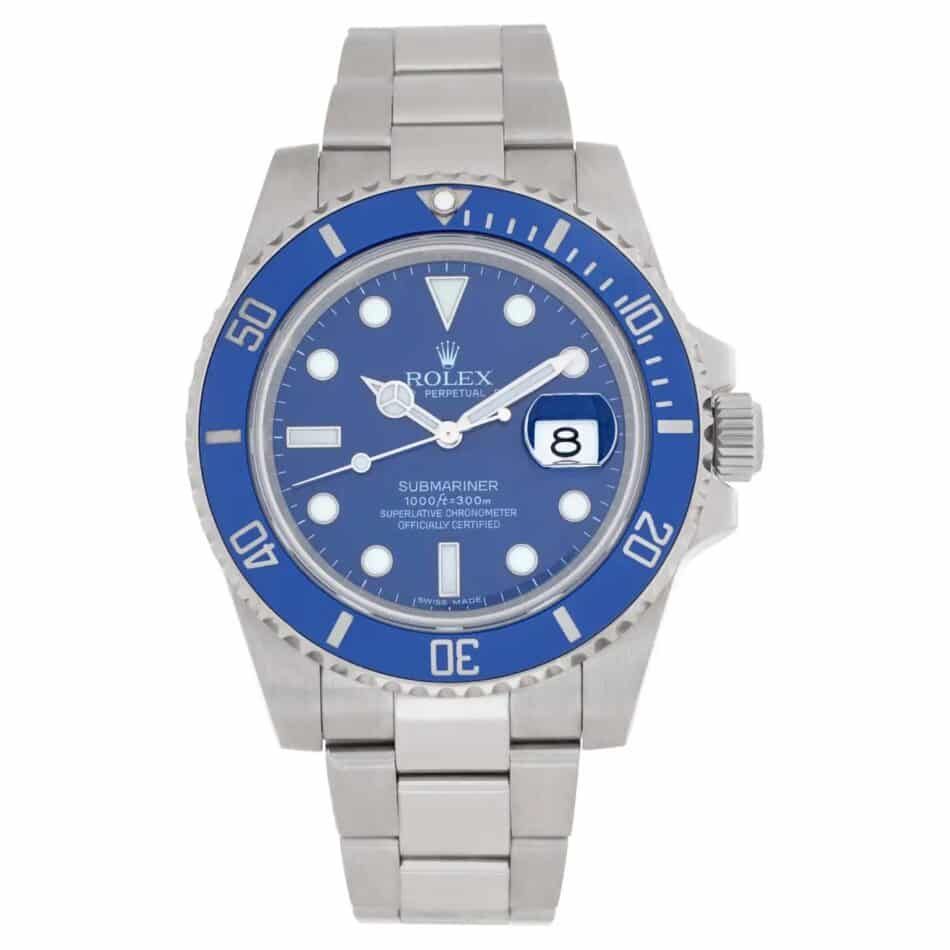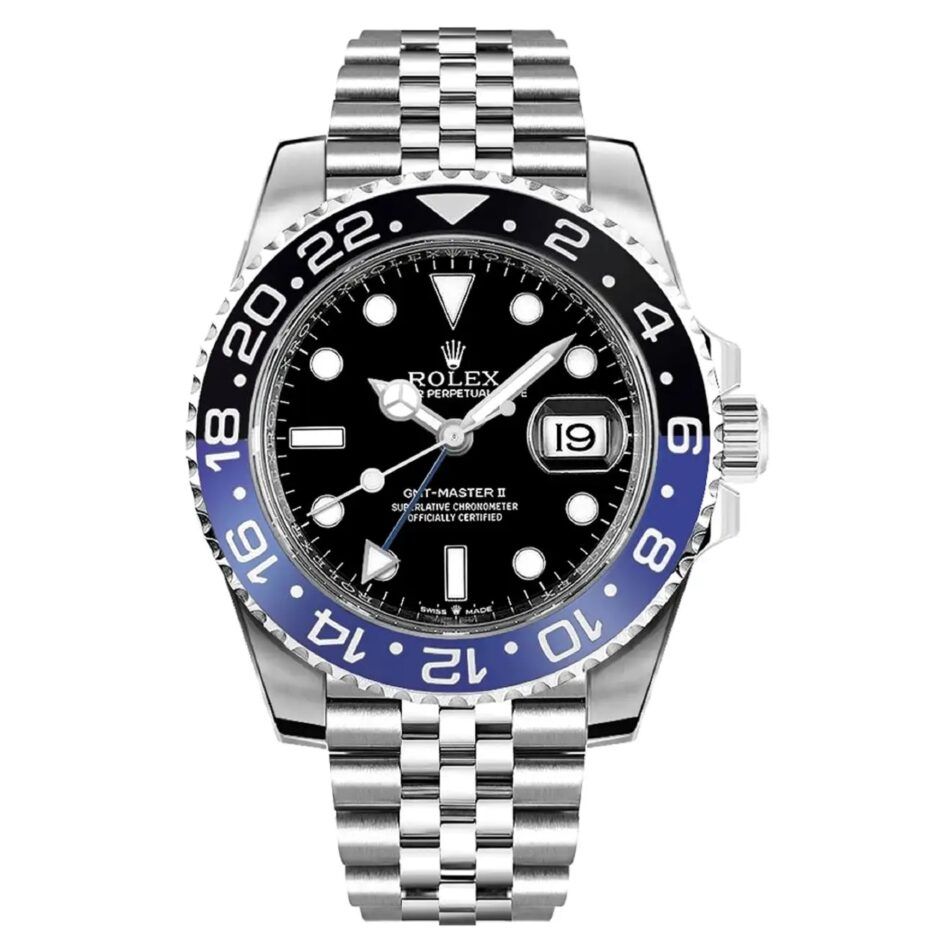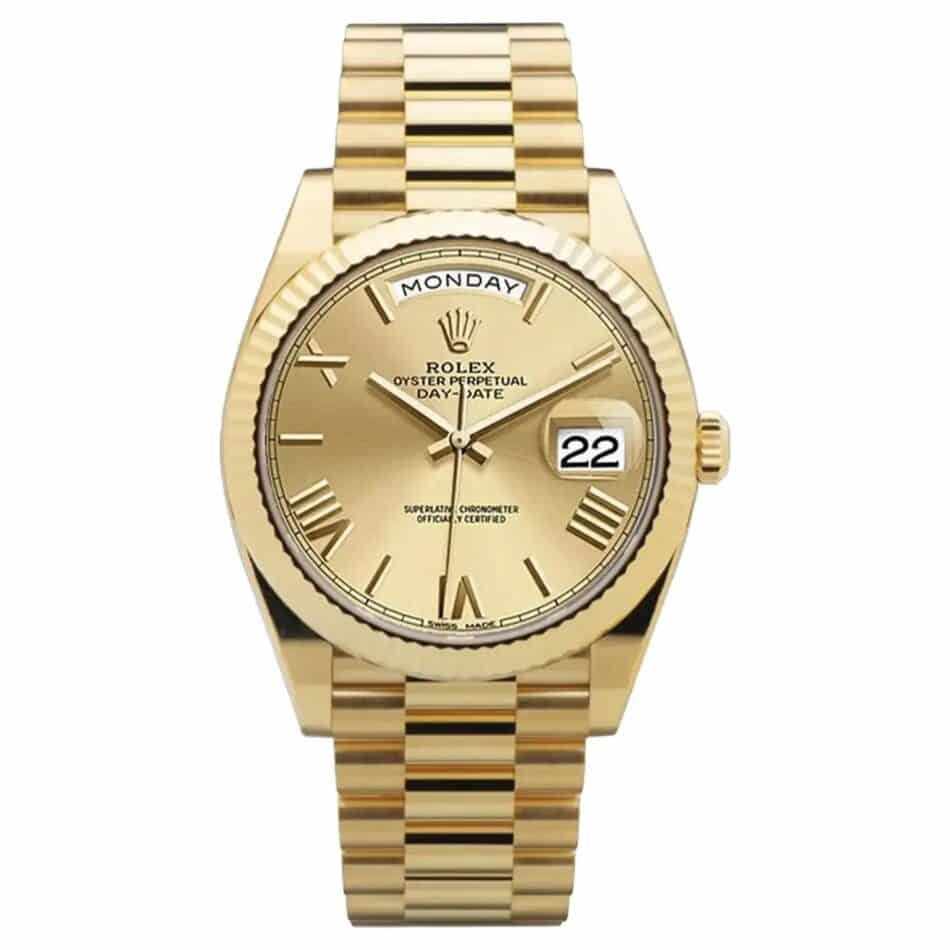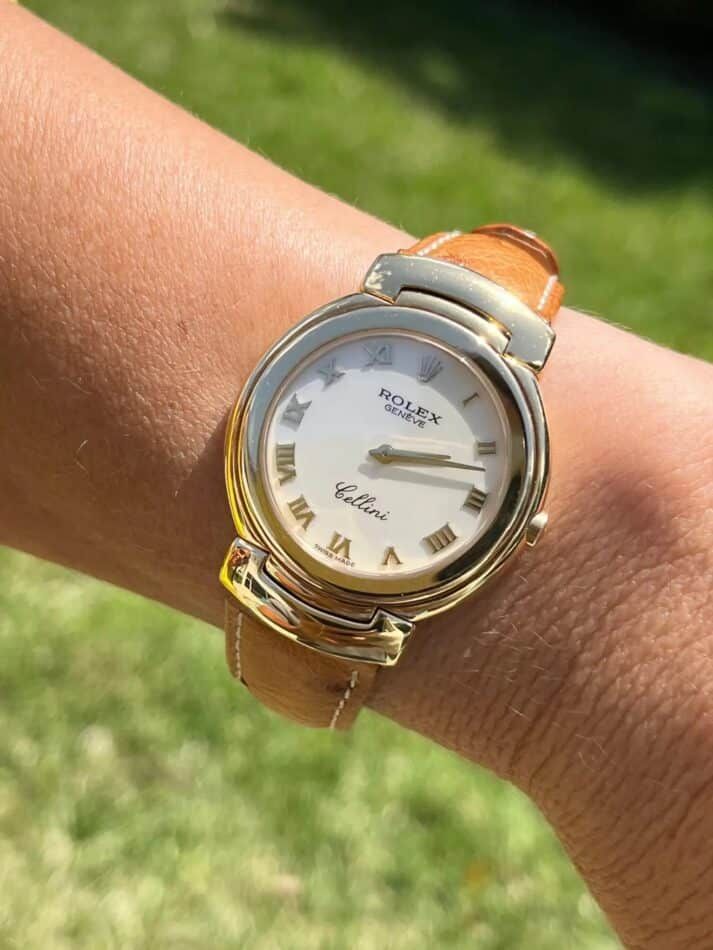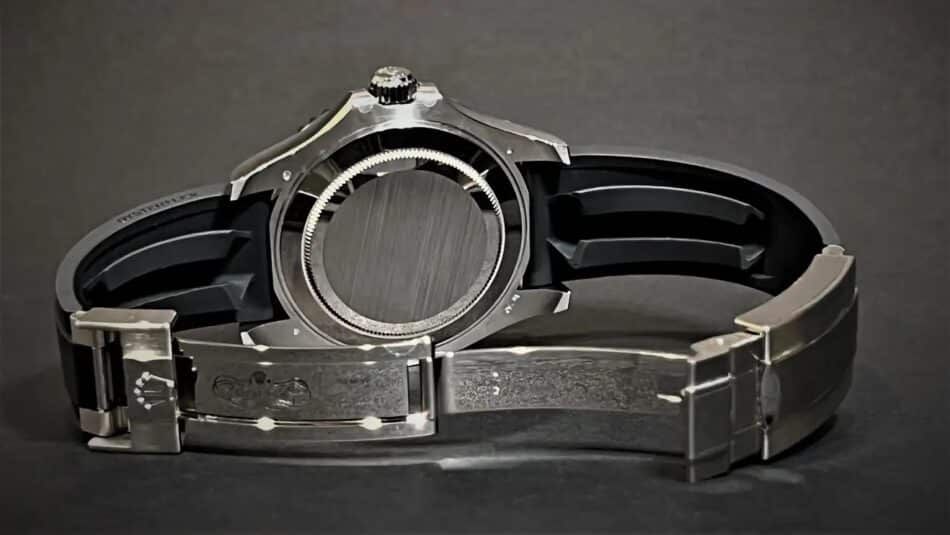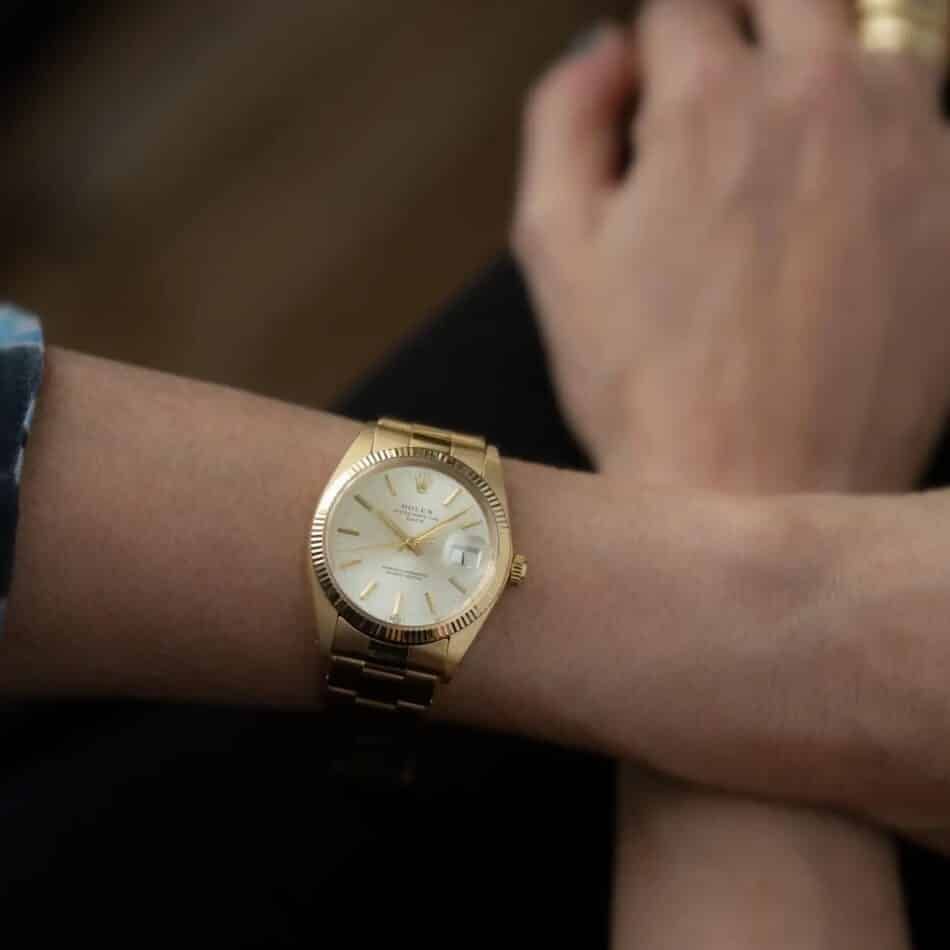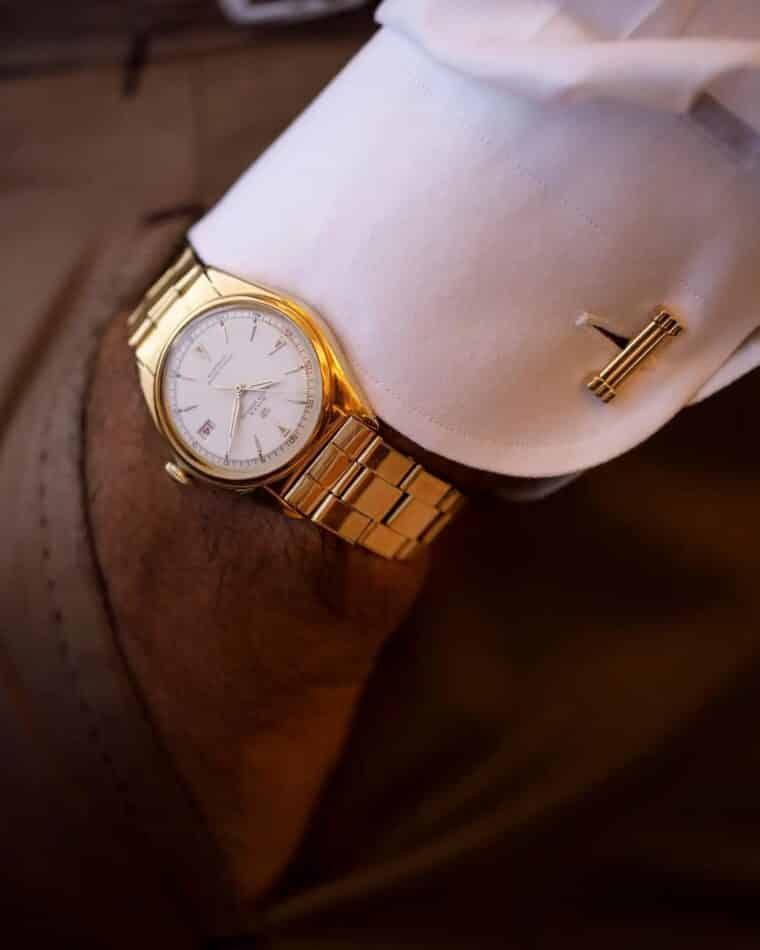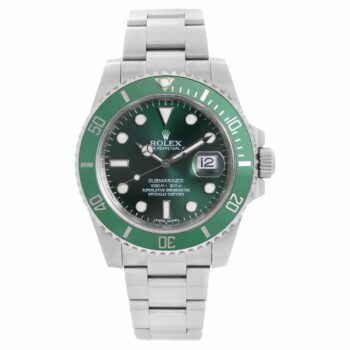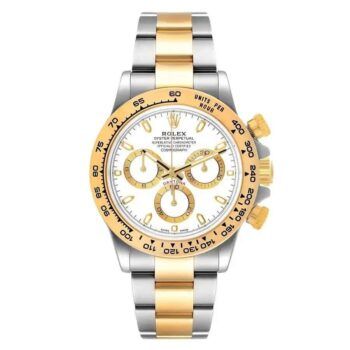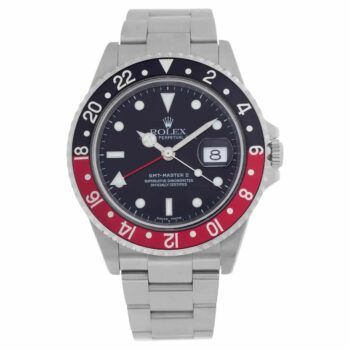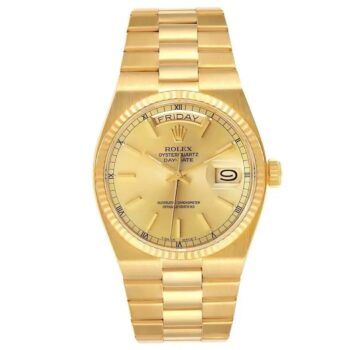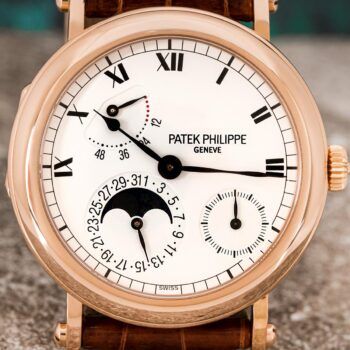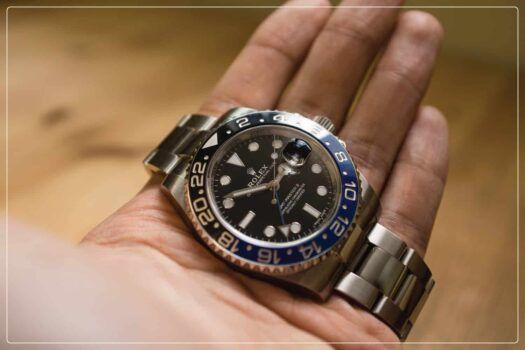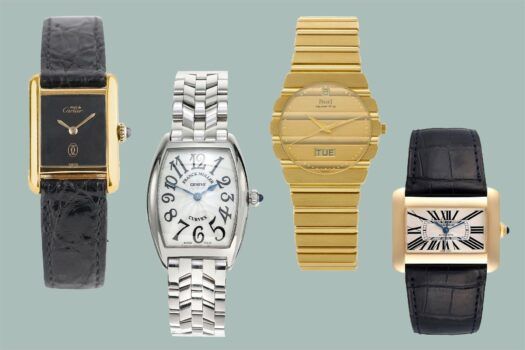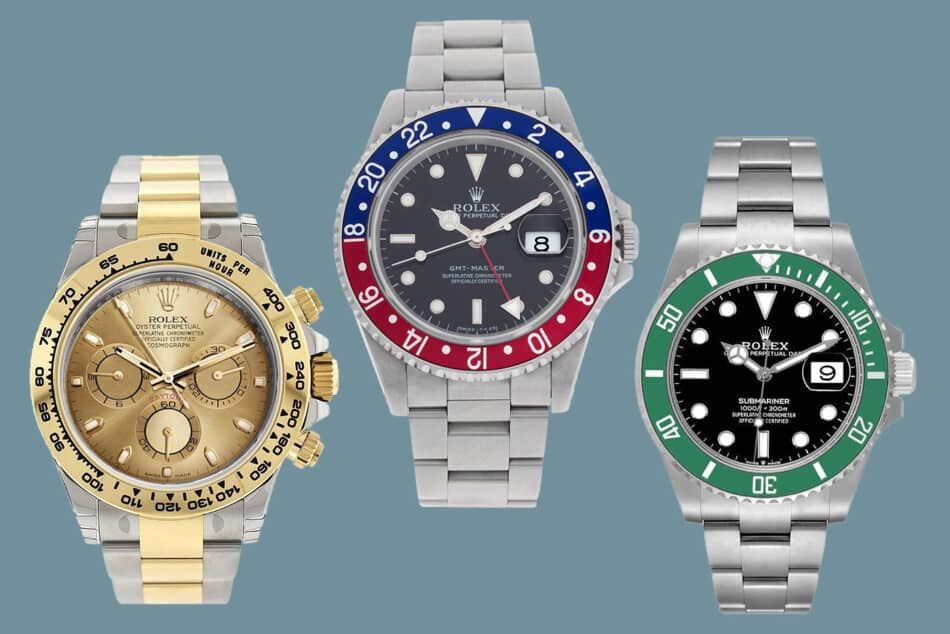
It’s time. Congratulations!
Purchasing a Rolex is an exciting and memorable experience. Whether you’re shopping for a Rolex to celebrate a milestone, honor an achievement, make a statement or just because, knowing the ins and outs of buying this luxury watch will pay off when you walk away from the deal with a timepiece that seems like it was made just for you.
This Rolex buying guide is designed to help you navigate the various decisions involved in buying a Rolex, from selecting the materials and movement to deciding on the age and adornments.
Which to Buy: New, Pre-Owned or Vintage?
The first question to ask yourself is whether you want a new, pre-owned or vintage Rolex.
New
The demand for Rolex watches has soared in recent years. This has led to wait lists at authorized Rolex dealers extending as long as several years for new versions of popular models, like the Daytona, Submariner and GMT-Master. For some buyers, the wait is worth it, but others aren’t so patient.
Buying a new, never-worn watch enables you to build a history with it that isn’t shared by anyone else. Keep in mind, however, that if you purchase a new Rolex from an authorized dealer, your choices are restricted to current models.
Pre-Owned
Limited editions sell quickly, collections change, and references are sometimes discontinued to keep Rolex’s catalogue fresh. This means that if you aren’t in a position to purchase now, by the time you are, the model you’ve got your eye on may no longer be available. But if you miss out on the model you covet when it’s brand-new, there’s a good chance you’ll be able to find it down the line as a pre-owned piece.
Although definitions vary, pre-owned watches are generally those less than 20 years old, while vintage ones are 20 years old and up. Rolex didn’t become the most recognized luxury watch brand in the world by selling products that aren’t built to last. For more than a century, it has made timepieces for visionaries and pioneers, who have carried them to the highest and lowest points on the planet.
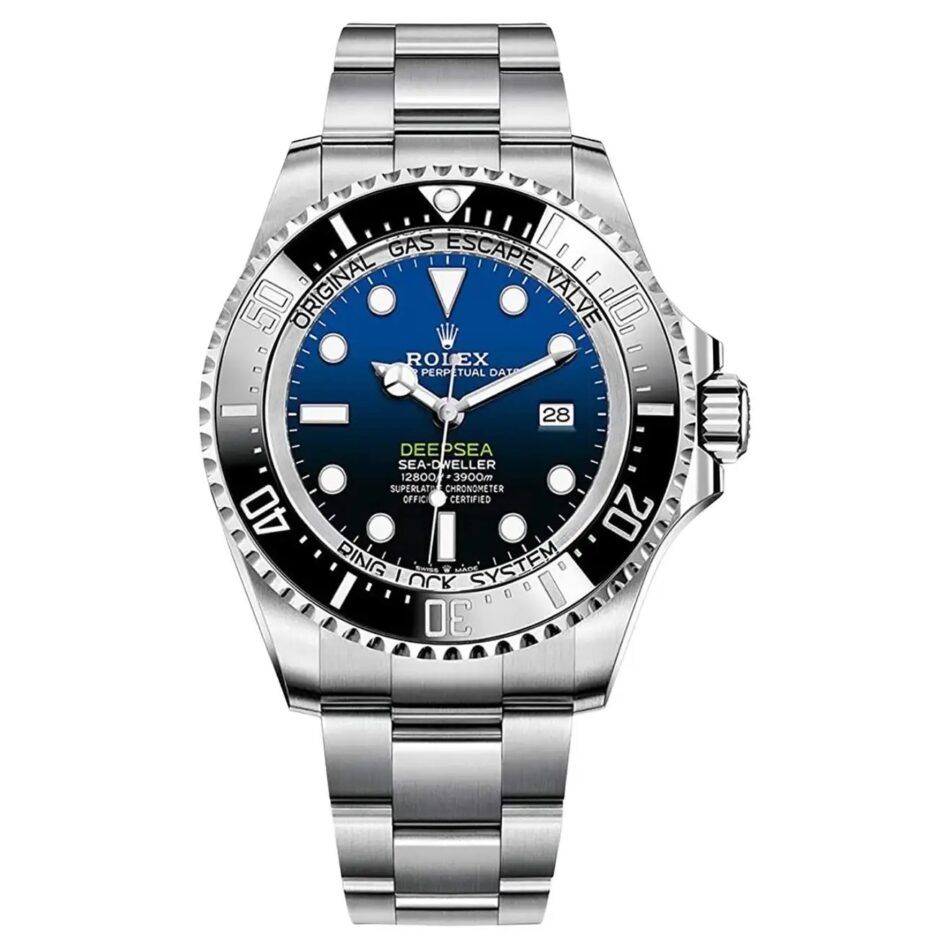
Every Rolex is constructed in-house and rigorously tested to ensure that it upholds the maker’s reputation for excellence when it leaves the facility. So, if you’re buying a pre-owned watch from someone who wore it in extreme conditions while climbing Mount Everest, that’s an amazing backstory, not an issue — Rolexes are built for that.
The greatest advantage to buying a pre-owned Rolex is that it opens up a wider range of models to consider, including rare ones that have been discontinued. On 1stDibs, you’ll find a large selection of pre-owned and vintage Rolexes. Among them you may spot new and like-new (mint) models that were purchased but never worn.
Another plus is that a pre-owned Rolex experiences less of an initial depreciation than a new one and will lose value more slowly over time. The depreciation rate of a particular watch depends on a number of factors, including the model, materials and market demand. The greatest drop in the value of a Rolex generally occurs right after it’s been purchased new, although not every Rolex experiences depreciation to the same degree.
It’s worth noting that Rolex watches — perhaps more than any other brand’s timepieces — hold their value over time. And some vintage and pre-owned models, like the emerald-green Rolex Submariner “Hulk,” have been known to appreciate well above their original purchase price.
Vintage
Browsing vintage Rolexes is great fun for those who appreciate a watch’s history. Whether it’s a highly coveted “Paul Newman” Daytona or an 18-karat-gold Oyster Perpetual Datejust like the one Rolex founder Hans Wilsdorf presented to British prime minister Winston Churchill in 1947, there’s no shortage of famous examples to explore.
By shopping the past, you have the opportunity to share in the history both of previous wearers and of Rolex itself, through the earlier styles and innovations that made it the luxury brand it is today.
Shopping vintage doesn’t mean buying a watch with a shorter shelf life. With proper care and servicing, a vintage Rolex can be passed down through generations as a family heirloom or resold to a collector or investor. The market for vintage Rolexes is a thrilling one to explore, especially if you’re hunting for a rare or historically significant watch.
What Makes a Rolex a Rolex?
Before shopping for a Rolex online, you may want to become acquainted with its components so that you can easily compare and contrast your options.
Movement
Like a beating heart, the movement, or caliber, is the intricate mechanism that keeps the watch running smoothly. Over the years, Rolex has used both mechanical movements, powered by a manually or automatically wound mainspring, and battery-powered quartz ones.
Prior to 1931, Rolex watches required manual winding. That year, the company introduced the first Bubbleback model, which offered a self-winding, or automatic, movement that used the wearer’s arm motions to keep the watch working — no batteries required.
Although Rolex is better known for its mechanical movements, it produced a number of quartz watches, like the Rolex Oysterquartz. The company stopped making quartz models in 2001, but these unusual references are still prized by collectors.
Most Rolexes have mechanical movements, which will inevitably require servicing. Look for servicing records when buying a vintage watch, and keep your receipts after your own maintenance visits. These records tend to increase a watch’s value, as they give prospective buyers more peace of mind that it has been properly cared for.
Case
The case is the watch housing. Rolex cases vary in size from 44 millimeters, for larger sport watches like the Yacht-Master II, to 24 millimeters, for some vintage Oyster Perpetuals. The classic size is 34 to 36 millimeters.
Lugs
The lugs, sometimes called horns, are the projections on a watch where the strap or bracelet is attached to the case. Common styles seen on Rolexes include Explorer lugs (which run in a straight line from the widest point of the case and are named for the Rolex Explorer, although they’re used by many watch brands), as well as wire, hooded, teardrop and Bombay lugs.
On vintage Rolexes, each lug has a hole through which the bracelet attachment bar slides. On today’s models, the hole is concealed on the inside of the lug. These watches are often called “Rolex no holes.”
Crown and Pushers
The crown of a watch is the round knob that allows you to wind it and set the time. Not to be confused with the coronet, or the Rolex crown logo, the winding crown is the only part of the watch’s movement you can touch.
All modern Rolex watches have a coronet etched into their crowns, along with one of several other marks. Different models have different markings, including crosses, dots and lines. These denote the material used in the watch and the type of crown structure it has — either a water-resistant Twinlock or a waterproof Triplock, for diving watches.
The pushers are buttons, usually found on either side of the crown, that control features like a chronograph’s stopwatch function.
Dial
The dial of a watch refers to the display, or face, that shows the time. Standard Rolex dials are brass, but others may be made of mother-of-pearl, meteorite or hard stones like lapis, onyx or opal.
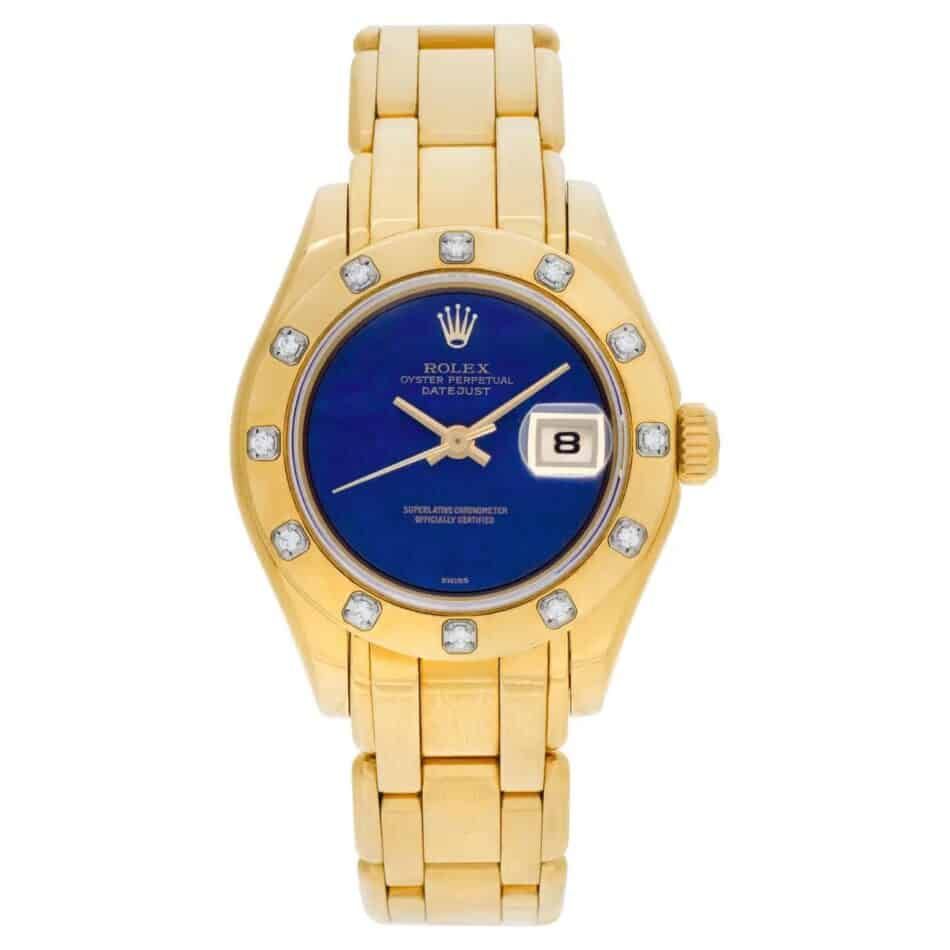
Standard dials come in numerous colors, including neutrals, like champagne and silver, and brighter hues, like blue, yellow and green. There are also special colors, like ice blue, which is used only on platinum Rolexes.
Special dial features include laser etching, gemstone embellishments and Jubilee dials, which are patterned with the word ROLEX.
Hands and Indexes
The hands move around the dial and point to the indexes, or hour markers. Rolex calls the indexes and the crown logo “appliques,” since they’re cutouts that are applied to the dial. Hands and indexes on contemporary models are made from 18-karat gold to prevent tarnishing.
Hand styles include:
- Alpha, characterized by a wide base and narrow stem, commonly found on vintage models
- Dauphine, faceted and triangular in shape
- Baton or stick, often luminescent, with flat or slightly pointed ends
- Mercedes, featuring a three-pointed star at the tip of the hour hand, a pointed, luminescent minute hand and a straight second hand with a circular detail
Index styles include both Arabic and Roman numerals. Stick indexes are long and slim, while Baton indexes are thick, luminescent and rectangular. Dagger indexes are arrow-shaped, with tips pointing toward the dial’s center. Round indexes are used along with baton indexes on Rolex professional models.
Crystal
The crystal is the clear cover that protects the dial, made of acrylic or sapphire. Until 1971, Rolex crystals were acrylic, which is generally more durable than sapphire but scratches more easily. Sapphire crystals, although harder than acrylic, tend to suffer permanent damage when they’re scratched or chipped, and they’re susceptible to shattering under forceful impact.
Rolex’s 1971 “Texan” Beta 21 reference 5100 was the first model to be fitted with a sapphire crystal, and the 1991 Oyster Perpetual was the last Rolex watch made with an acrylic crystal. Today, all Rolex watches are made with sapphire crystals.
Bezel
The bezel is the outer ring that keeps the crystal in place. A quality watchmaker also uses the bezel to improve the look of the watch or to add functionality. One of the most recognizable Rolex bezels is the fluted, or pie-crust, style. But other styles have practical applications.
The racetrack-inspired Rolex Cosmograph Daytona has a chronograph bezel, which displays a tachymeter to measure speed over a set distance.
The Rolex Submariner features a rotating bezel that allows divers to keep track of their elapsed time underwater.
The GMT bezel features 24-hour markings to help the wearer keep track of a second time zone, making it ideal for travelers.
More complex Rolex models, like the Yacht-Master II and Sky-Dweller, feature a rotating Ring Command system. When used in conjunction with the crown and pushers, the Ring Command offers a number of settings, like the Yacht-Master II’s 10-minute regatta countdown timer.
Stone-studded bezels are often found on men’s dress watches or women’s styles, but you’ll also see them adding wattage to sportier watches, like the Daytona.
Gemstones can increase the beauty and value of a watch — and the status of the person who wears it. They frequently appear on the exclusive limited editions that populate the upper ends of Rolex price ranges.
Popular Rolex Models
Each model has its own look, features and personality. Here are some of the most iconic — and sought after.
Oyster Perpetual
Introduced in 1926, the Oyster was the first truly waterproof wristwatch and is the foundation on which Rolex built its empire. Since then, the Oyster designation has encompassed many models and versions, including some that are waterproof to a depth of 100 feet.
The Oyster Perpetual was released in 1931 and is still made today. Its debut marked the introduction of the first self-winding watch powered by a perpetual rotor. Perpetual written on the dial means the watch is driven by the motion of your arm and built to run for your entire life, with proper servicing. If you stop wearing it, the watch will die after a few days, but it’ll start right back up once it’s rewound.
Many models use the Oyster and Perpetual technologies, especially Rolex diving watches.
Datejust
The Datejust, introduced in 1945, was the first self-winding wristwatch to automatically track the date on its dial. Both modest and instantly recognizable, it combines timeless design with technological ingenuity.
Rolex created the Cyclops lens, a 2.5x magnifier developed to make date windows easier to read, in the early 1950s. It was first added to the Datejust in 1953 and is now a defining feature of the model.
Submariner
Launched in 1953, the Submariner dive watch is a descendant of the Oyster capable of plunging to 1,100 feet below sea level. It has graced the silver screen many times, including on the wrist of Sean Connery’s James Bond in classics like Dr. No and Goldfinger.

Its hallmarks are its graphic dial, made easy to read underwater by its illuminated hands and hour markers, and its prominent bezel, which indicates elapsed dive time.
Submariners have been released with bezels in three basic colors: black, blue and green. This had led fans to create nicknames for the different colorways, including “Hulk” (a green bezel with a green dial), “Starbucks” (a green bezel with a black dial), “Kermit” (a light green bezel with a black dial), “Smurf” (a blue bezel and blue dial) and “Bluesy” (a blue bezel and blue dial on a two-tone gold-and-steel Submariner).
GMT-Master I and II
Developed in collaboration with Pan American World Airways and originally distributed to the airlines’ employees, the GMT-Master was made available to the public in 1954.
Naturally, it was designed as a pilot’s watch, with an extra hand pointing to the 24-hour markers on the rotating bezel, allowing the wearer to simultaneously monitor two time zones. For pilots, the second zone was often Greenwich Mean Time (GMT), used in the aviation industry and international weather observation (now called Coordinated Universal Time).
In 1983, Rolex introduced the GMT-Master II. Still in production, this next-gen version offers the ability to set the fourth hand independently — without disturbing the regular hour hand — making it possible to follow two time zones on the 12-hour dial and a third on the rotating bezel.
The classic GMT bezel is a two-tone design, with one color representing daytime hours and the other nighttime. The best known is the “Pepsi” bezel (red and blue), but others include the “Coke” (red and black), “Root Beer” (gold and brown) and “Batman” (blue and black). In March 2022, Rolex surprised the watch world by debuting a GMT with a green-and-black bezel and an unusual destro configuration, with the crown on the left-hand side, which some are calling the “Sprite.”
Day-Date
The Day-Date, which debuted in 1956, conveniently features the day of the week on the dial in addition to the date. Made only in gold or platinum, the watch became known as the “President” thanks to Lyndon B. Johnson, who wore one while in office in the mid-1960s.
In 1962, even before the model gained its prestigious nickname, the actress Marilyn Monroe reportedly gave President John F. Kennedy a Rolex Day-Date the night she famously serenaded him with “Happy Birthday” (although he apparently never wore it and asked an aide to dispose of it).
Daytona
The Rolex Cosmograph Daytona, released in 1963 to celebrate the brand’s status as official timekeeper of the Daytona International Speedway, is a chronograph, or stopwatch, designed to help drivers calculate their speed over a determined distance.
It didn’t become truly popular, however, until collectors in the 1980s realized that it was the preferred watch of screen legend Paul Newman. Rolexes with the same styling as the actor’s 1968 reference 6239 became known as “Paul Newman” Daytonas.
Since then, it’s been worn by countless other celebrities, from fashion mogul Victoria Beckham to Grammy winner Jay-Z.
Straps and Bracelets
The choice of a strap or bracelet can drastically affect the look of your watch, making it formal or casual, traditional or daring. Although often an afterthought, it’s an important element.
A Rolex bracelet is made of metal, such as stainless steel, gold or platinum. A strap is made of leather, nylon or another fabric. Consider comfort, practicality and style when selecting yours.
Oyster
This three-link metal bracelet with a traditional folding clasp is commonly found on sport models like the Submariner and the Daytona. It’s been made in everything from stainless steel to gold and platinum, as well as in two-tone steel-and-gold combinations.
Pearlmaster
The Pearlmaster bracelet is made of lustrous 18-karat yellow, white or rose gold and is usually used for women’s styles.
Jubilee
Created to celebrate Rolex’s 40th anniversary, in 1945, the Jubilee first appeared on the Datejust. It has a more intricate five-link design and is considered one of the brand’s dressier bracelets. Its use on the “Batman” GMT-Master II marked a revolution of sorts for the Jubilee, breaking its historic ties to the Datejust.
President
Launched by Rolex in 1956 and made entirely of precious metal — rose, yellow or white gold or platinum — the President, or Presidential, bracelet was created for the launch of the Oyster Perpetual Day-Date. After U.S. president Lyndon B. Johnson wore a Day-Date on this bracelet in 1965, Rolex called it “the president’s watch” in an advertisement, and it’s been known as the “President” ever since.
Leather
Leather straps tend to accompany vintage Rolexes, depending on their year of manufacture. They’ve also been paired with dress watches, like the Cellini.
But a leather strap doesn’t have to be traditional. In the early 2000s, Rolex unveiled a number of Daytonas with colorful dials and equally colorful pink, yellow, turquoise and green leather straps, nicknamed the “Daytona Beach” collection. The company has also made leather straps in richer colors, like deep red, forest green and dark blue.
Oysterflex
This hybrid bracelet, available only in black, consists of a highly flexible metal blade sheathed in comfortable, durable elastomer for a sporty appeal.
The Right Bracelet or Strap for You
While metal bracelets age better and retain or add more value than other materials, some buyers are drawn to the vintage quality of a leather strap or the comfort and flexibility of a rubber one. Leather, gold or platinum might complement a traditional dress watch, while stainless steel or rubber may suit a bigger, sportier model.
Whatever your style, your bracelet should fit snugly, both for security and to avoid chafing. If your watch spins around your wrist, it’s best to size down or have a few links removed.
A Few Notes on Size
Personal preference is the most important consideration in choosing a larger timepiece or a smaller one. A watch’s size is traditionally determined by measuring the case diameter horizontally (from 9 o’clock to 3 o’clock) in millimeters. But this measurement doesn’t take into account the protrusions around the watch — like the crown and pushers — nor does it factor in the lugs.
The vertical lug-to-lug measurement can also be helpful, since it will tell you how much space the case will take up on your wrist before the straps begin to curve around your arm. Larger wrists can accommodate larger watches, since they have more surface area, while a smaller watch might be a more comfortable fit for a smaller wrist.
A watch’s thickness will affect the wearability of a suit, which is why dress-style Rolexes like the Cellini, Datejust and Day-Date generally have slimmer cases than other styles.
Even if you’re buying a Rolex online, consider trying on different sizes in a store to see what you prefer — this will make it easier to choose the one right for you.
Imitation Isn’t Always Flattering: Spotting a Counterfeit
If you visit New York City’s Times Square, you’re likely to come across hucksters eager to sell you a brand-new Rolex for a few hundred dollars. While these vendors’ watches are easily identified as counterfeit, not every disreputable dealer is as transparent.
Buying a fake is every watch lover’s nightmare, but there are a number of things you can do to ensure your purchase is legitimate.
- Trust your gut, always. If something feels off, or you have real suspicions, keep looking.
- Watch out for the telltale signs of a fake. If you’re shopping in person, feel the weight. Rolex uses extremely high-quality metals, which are heavy in the hand. If the watch feels unnaturally light, there may be a reason.
- Look at the second hand. With a battery-powered movement, it ticks forward every second, while on a Rolex it glides around the dial, thanks to the watch’s mechanical movement. As a general rule, if it ticks, it’s a fake.
- Examine the details. Like every other aspect of a Rolex, the engraving and other markings should be extremely precise. Fonts should be crystal clear and uniform, and words should be spelled correctly. If you’re able to see the inside of the watch, look for “Rolex” etched into the movements. Newer models will have serial numbers etched on the case between the lugs, at 6 o’clock.
If you’re in doubt, ask for authentication papers, such as a servicing record with the serial number on it.
The Right Rolex Is Worth Your Time
Wearing a Rolex means something. It’s not just a timepiece — it can also represent an important moment in a person’s life, like a graduation, wedding, professional achievement or a milestone birthday. It carries the prestige of more than a century of revolutionary watchmaking. It’s an investment you can wear every day — beautiful, useful and timeless.
